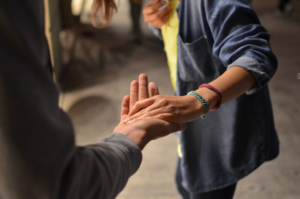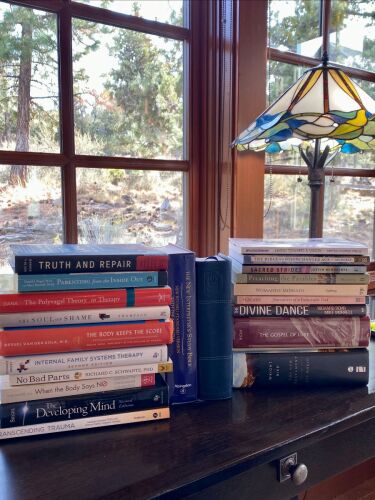 Do you sometimes feel like you lack compassion?
Do you sometimes feel like you lack compassion?
Much as we would like to turn the page on problems when we enter a new year, they persist. In the context of unrelenting challenges, you’ll sometimes see the phrase “compassion fatigue.”
Compassion fatigue is a myth.
It’s much more likely we’re experiencing empathy fatigue. While we often use the terms interchangeably, compassion and empathy are different. We know from neuroscience that they reside in distinct areas of the brain.
Empathy is feeling with which helps us understand why—when we are bombarded by suffering—we can become overwhelmed and exhausted.
Empathy takes us into the pain and connects us to vulnerability—our own and others’.
That’s a good thing, but it is not the last step in the process. We want to move to the next step—compassion.
Compassion is feeling for another person. Neuroscience shows that empathy catalyzes our compassion. We move from entering into someone’s pain to accessing compassion, which promotes action on behalf of the other person (or ourselves).
Compassion is an expression of unconditional love and is one of our God-given resources.
My husband and I recently traveled to Vietnam, Cambodia, and Thailand. I was surprised and moved by the gracious reception a group of Americans received, particularly in Vietnam and Cambodia, given the relatively recent war that devastated both countries.
Could compassion be the reason?
In Holy Envy, Barbara Brown Taylor writes, “Christianity and Buddhism both recognize the centrality of suffering in human life. Both stress compassion.”
Compassion is not always our first response to suffering.
Suffering is scary, so parts of us jump in with judgment, busyness, distractions, and resentment to try to minimize the impact.
Other members of the internal family—the ones most likely to feel burnout—take on too much responsibility for other people’s pain. They are like dry sponges dropped into warm water. They soak up the pain and quickly become saturated.
Members of your inner family adopt strategies to protect you from pain—yours and others’. Their methods are well-intentioned, but they stop the process of moving from empathy to compassion. Their protective energy cuts off resources that help you extend love in practical ways to others.
When you notice your heart is either closed or shattered, that’s a signal parts of you need attention.
Connect with them by asking, “How are you trying to help me? What do you need?” They calm down because they appreciate your respect and feel relieved they are not alone. You will notice resources like clarity and compassion bubbling up. Clarity guides you in determining what is yours to do in a particular situation, and compassion energizes your actions.
Compassion moves us from feeling the pain of suffering—a necessary step—to a state where we can extend comfort and care to others and ourselves.
Presence is an impactful expression of compassion. Creating a sacred space filled with compassion gives hurting parts of ourselves—and hurting parts of others—a new experience. There’s a light in the dark, a spark of hope in a time of despair.
Our Cambodian guide shared his practice of going to one of the temples during quiet times at dawn or dusk for worship. The temple has numerous towers, each of which has four faces of Buddha radiating compassion. It is a sacred space, and it’s compelling. I still carry the sensation of being there in my heart.
Imagine inviting the members of your inner family into a sacred space overflowing with compassion.
And remember, there’s no scarcity of God-given resources.




Leave A Comment